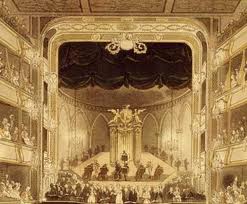Handel was a keyboard virtuoso as well as a great composer. He wrote 15 organ concerti between 1735 and 1751, and has been credited as being the first to compose an organ concerto. In addition to utilizing the “king of instruments” as a solo voice, Handel left plenty of room in these works for his own improvisation and solo flourishes.
The B-flat concerto opens with a magnificent chaconne in linked sections, with a noble theme and variations played over a relatively simple harmonic structure. In addition to its grandeur, it is noteworthy as the only instance in Handel’s organ concertos where the use of the pedal is specified. A reflective slow movement follows, leading to a sprightly fugal allegro which Handel borrowed from one of his string concertos. The fourth movement is for solo organ, one of many instances in these concertos where Handel allowed for the organist to freely improvise or play an appropriate short work (here in the contrasting key of G minor). The concerto ends with the bourrée, a lively stylized dance movement.
Concerto for Organ and Orchestra in Bb Major
Op. 7 No. 1
By George Frideric Handel






